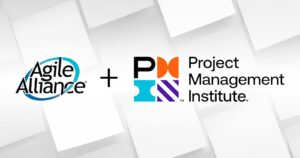In the effort to achieve Business Agility, adopting a framework like the Scaled Agile Framework (SAFe) promises significant improvements in delivery efficiency, predictability, and overall quality. However, the success of SAFe, or any similar scaled agile approach, is contingent on all stakeholders truly understanding and embracing its principles. One of the common pitfalls observed is the repeated request for updates and progress reports from Agile Release Trains (ARTs) by managers and senior leaders. Let’s delve into why this behaviour is counterproductive and how it contradicts the very essence of SAFe.
Existing Visibility Tools
Before discussing the problem, it’s essential to acknowledge the range of visibility tools and mechanisms available in SAFe:
- Kanban Boards: These boards offer real-time visualization of the workflow and the amount of work in progress (WIP), allowing anyone to understand the progress at a glance.
- ART Planning Boards (aka Program Boards): Useful for understanding the broader objectives of a release train, these boards provide insights into features, timelines, and dependencies.
- Metrics: Both at the team and ART level, SAFe has a suite of metrics designed to offer insights into performance, quality, and delivery.
The Problem with Unnecessary Progress Reports
When senior leaders ask for separate updates and progress reports, they inadvertently introduce a host of issues:
- Waste: Crafting progress reports that replicate what’s already visible is wasteful. It diverts team members from productive activities, detracting from the main goal of delivering value.
- Contradiction to SAFe Principles: One of the underlying principles of SAFe is ‘transparency.’ The entire idea behind tools like Kanban boards is to make information easily accessible to all stakeholders, negating the need for periodic reporting.
- Mistrust: Continual requests for updates can be interpreted as a lack of trust in the teams. This can erode morale and diminish the sense of autonomy and empowerment, which are critical for agile teams to thrive.
- Distortion of facts: Since reports are manually created from different sources, the manual transposition and choice of words and language can alter the reader’s perception of what is happening.
A Call for Leadership Agility
Agile isn’t just a methodology for development teams; it’s a mindset that the entire organization, including senior leadership, needs to embrace. Leadership agility requires:
- Trust in the System: Senior leaders must have faith in the processes and tools that their teams are using. When teams see that their leaders trust the system, it bolsters their confidence and commitment.
- Being Active Learners: Leaders should familiarize themselves with Agile tools and metrics. This not only saves time but also reinforces their commitment to the framework. It’s true that the information contained in the visibility tools is usually not pushed to leaders, but instead must be ‘pulled’. This may be another adjustment to be made, but accommodations can also be arranged.
- Reducing Redundancies: Leaders should always be on the lookout to eliminate waste. By refraining from asking for redundant updates, they set a precedent for efficiency throughout the organization.
Conclusion
Leaders may have good reasons for requesting status reports, but like any metric, the effort must be justified by the value of the information provided. The metric must convey an accurate account and be used to tell a proper story.
While the intent of senior leaders is often to stay informed and and support the teams to stay on track, it’s essential to recognize that the SAFe framework already provides the tools for this very purpose. By truly adopting the principles of SAFe, not just in letter but in spirit, organizations can ensure smoother workflows, better morale, and ultimately, better products. Let’s embrace transparency, trust our teams, and utilize the tools at our disposal to their fullest potential.





